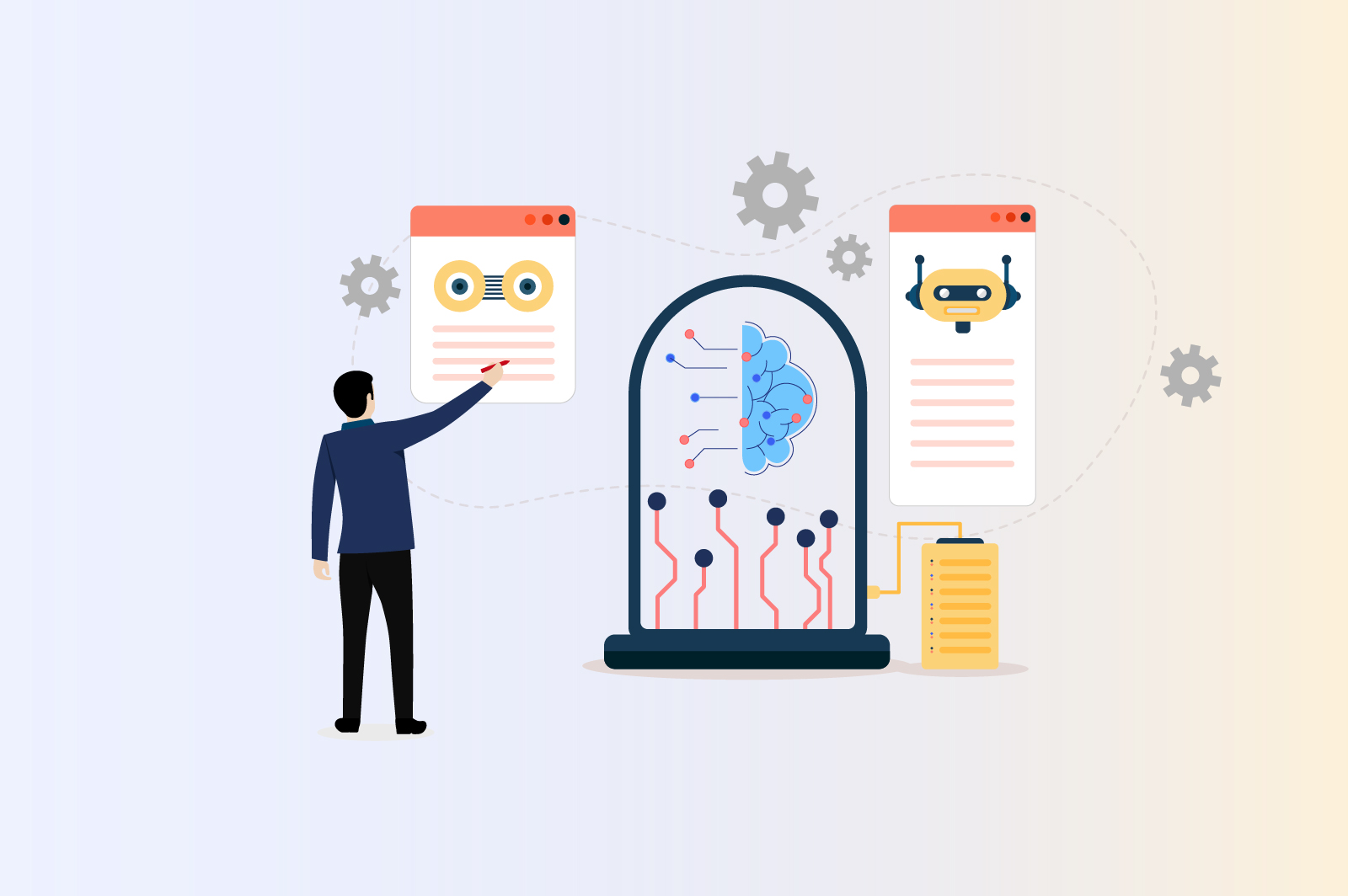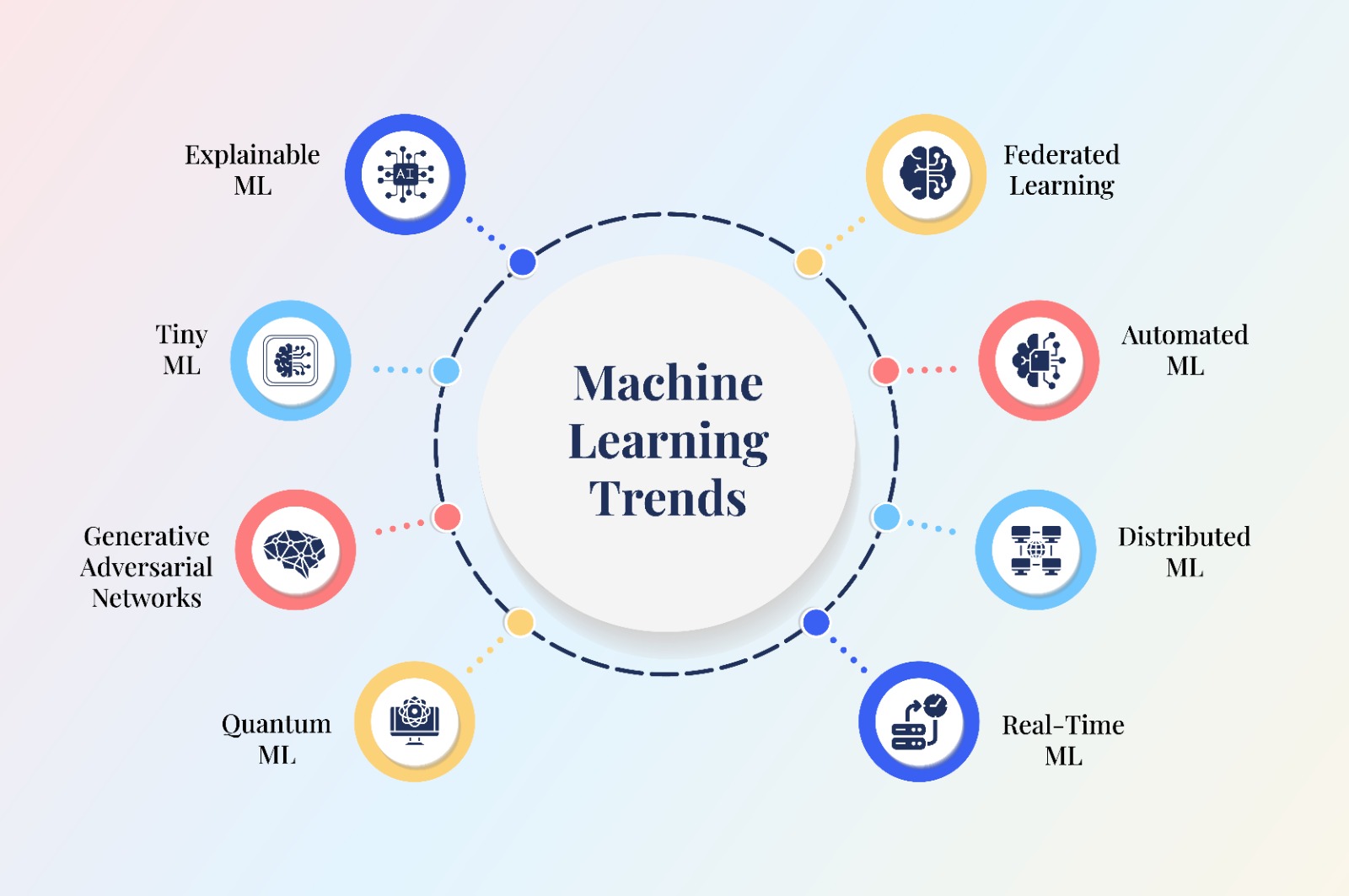The Future of Machine Learning: Trends and Innovations

Highlights:
Predicting the future is not magic; it’s AI—Dave Waters.
Dave Waters could not be more perfect in describing the next significant innovation. Innovation in machine learning presents vast opportunities. Machine learning has the potential to fundamentally transform industries, and we’re here to explore this potential.
As a leading provider of business intelligence services in the USA, we have firsthand observed how machine learning is globally transforming businesses. Looking ahead, we firmly believe that numerous innovations will continue to unfold soon.
Our expert analytics team is actively exploring machine learning and is eager to share insights, trends, and innovations that have astounded them with you. In this blog, we will outline 8 emerging machine-learning trends and innovations that are expected to shape the near future.
Top 8 Machine Learning Trends You Cannot Miss

1. Federated learning:
Federated learning represents a privacy-first approach to machine learning. In this approach, your devices collaborate to extract insights from your data without compromising your privacy.
Technically speaking, federated learning is a decentralized method for training machine learning models. Instead of collecting all data in a central server, federated learning keeps data distributed across multiple devices or locations. The model is trained locally on each device using its data, and only the model updates (not the raw data) are sent to a central server or cloud, where they are aggregated. This innovation in machine learning is great for solving the challenge of data privacy, commonly associated with machine learning.
2. Automated Machine Learning:
AutoML revolutionizes the way we build and deploy machine learning models, transforming ambitious ideas into practical solutions. Who thought self-driving cars would be a reality?
Automated ML, along with other technological advancements, made this once seemed science fiction, increasingly commonplace on our roads.
AutoML aims to make machine learning more accessible to all users, irrespective of their expertise in data science. It automates the entire lifecycle of applying machine learning to real-world challenges—from preprocessing data to even deploying and monitoring models. This streamlined approach can make machine learning easily adaptable in diverse industries.
3. Distributed ML Portability:
Imagine your AI model seamlessly shifting from your laptop to a cloud server or even to a specialized device like a smart camera. Distributed ML is exactly that. It focuses on making machine learning models run seamlessly in different computing environments (machines, cloud services, IoT devices, etc.) without requiring extensive modifications.
In traditional machine learning, models are often developed and trained on centralized servers or high-performance computing clusters. Distributed ML ensures that models can be easily deployed and scaled across diverse infrastructures, including on-premises data centers, hybrid cloud environments, or multiple public cloud providers. This allows the organization to scale better.
4. Real-Time ML:
Real-time ML is about reacting to data as it flows in and algorithms acting faster than you can say “go!” It involves making predictions or decisions instantaneously as new data becomes available, often within milliseconds to seconds.
A simple example of this would be your e-commerce shopping recommendation, which adapts in response to your behavior, maximizing engagement and sales. Beyond this, real-time ML is crucial in applications where timely decision-making is critical, such as fraud detection in financial transactions, where immediate action can prevent losses, and predictive maintenance in industrial settings.
Read More blog – Overcoming Challenges in Implementing Machine Learning Projects
5. Quantum Machine Learning:
Quantum mechanics steps up to rewrite the rules of AI, and it turns out to be an ML innovation that has fascinated one and all. Quantum machine learning explores the intersection of quantum computing and machine learning, enabling breakthroughs in solving complex problems that were previously computationally infeasible.
While still in its early stages, Quantum ML holds promise for revolutionizing fields such as cryptography, drug discovery, and optimization problems in logistics and finance.
6. Generative Adversarial Networks (GAN):
Generative Adversarial Networks (GANs) are among the most influential and widely used advancements because they have been catalysts for redefining how we imagine, create, and experience.
It consists of two networks: a generator and a discriminator. The generator generates new data instances, such as images, music, or text, while the discriminator evaluates the authenticity of these instances. They work in a competitive manner, where the generator aims to create increasingly realistic outputs, and the discriminator seeks to distinguish between accurate and generated data.
7. Tiny ML:
The future of ML is tiny but bright. Your Alexa is an everyday example of a tiny ML, but it is just a tiny part of your tiny ML. Tiny ML optimizes and deploys machine learning models efficiently in resource-constrained environments. It works quickly with small, low-power edge devices with limited computational resources.
Tiny ML extends its reach to enhance efficiency, security, and personalization across countless applications—from healthcare to agriculture. To give you an example of Tiny ML’s huge impact – Smart Wound Monitoring, where machine learning can monitor parameters such as wound temperature, moisture levels, and healing progress to alert for infections or complications.
8. Explainable AI:
Have you ever wondered why AI models make certain decisions? You are not the only one. In fact, even the researchers and developers who develop them struggle to understand their choices. Hence comes the problem of algorithm biases. This makes explainable AI a crucial machine learning innovation.
Explainable AI (XAI) refers to the ability of AI systems to explain their decisions and actions in a way that humans can understand. It aims to provide transparency and insights into the inner workings of complex AI models, making their outputs interpretable and trustworthy.
Will machine learning replace the human brain?
Definitely not. As a provider of business intelligence services based in the USA, we are working continuously at the juncture of witnessing a collaborative relationship between humans and machine learning in 2024.
“Human-ML collaboration: combining human ingenuity with ML precision to achieve more together than either can alone”
Machine learning may seem like a threat. However, it cannot replace human qualities like creativity, empathy, emotional intelligence, consciousness, and moral reasoning. It can augment human capabilities and enhance human potential rather than replace it.
In the future, the relationship between humans and machines will likely evolve towards collaboration rather than competition for cognitive supremacy. It’s a future where our unique human qualities are not just valued, but essential.
Conclusion:
In the near future, Machine learning will be the norm in every industry. What we’re witnessing is a transformative shift: organizations are being rewired using ML, prioritizing data-driven decisions over instinctual ones. As ML continues to innovate, its integration into every facet of industry promises to redefine how businesses operate, innovate, and elevate themselves in an increasingly data-rich world.
If you are a business based in the USA looking to grow in this data-driven world, leveraging ML as a tool, now is the time! Quilytics, a business intelligence service based in New Jersey and New York, can help you establish suitable practices that align with your business goals.
As a business analytics solution provider, ML algorithms and techniques are integrated into our consulting services to enhance project implementation, automate data handling, and improve decision-making processes for your business.
We specialize in comprehensive analytics services tailored to drive business success. From spending and procurement analytics to digital marketing and website analytics, we empower informed decisions for organizations in New York, New Jersey, and other parts of the USA.
Don’t get left behind in the rapidly evolving data-driven world. Contact us today to discuss your project!
FAQs
What are the 7 stages of machine learning?
7 stages of machine learning are under the following:
- Data Collection
- Data Preparation
- Exploratory Data Analysis (EDA)
- Feature Engineering
- Model Selection
- Training
- Evaluation
Will AI replace machine learning?
No, AI will not replace machine learning. Machine learning is a subset of AI and plays a crucial role in its development and applications.
Is machine learning the same as AI?
Machine learning (ML) and artificial intelligence (AI) are related but not the same thing. Machine learning is a tool or technique used to achieve artificial intelligence. AI encompasses a broader range of technologies and methods beyond just machine learning.
